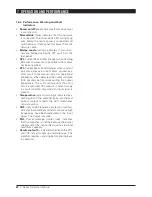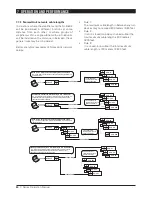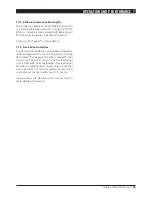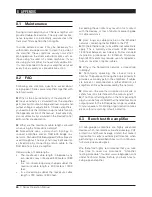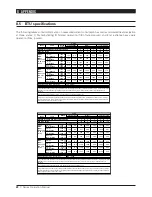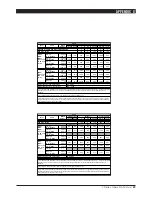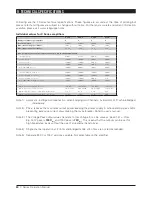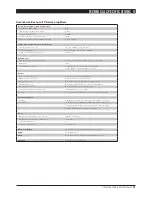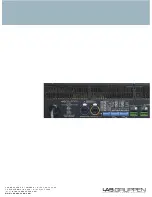
18
C Series Operation Manual
speaker or overheating of the output channel through
high current draw. For example, with a very “hot”
conti-nuous output signal, the temperature could rise
to a critical level and activate Temp warning or even
Temp Mute. Lowering the VPL setting normally will
solve this situation.
If the Current Peak Limiter is active or indicates low
impedance, lowering the VPL setting can rectify this
situation as well.
7.4.6 Constant Voltage 70 V and 100 V systems
setup and operation
When using C Series amplifiers to drive constant
voltage (hi-impedance) speaker systems at 70 V
rms
or 100 V
rms
, you can in most cases simply connect
the speakers to the amplifier output terminals, select
the correct VPL setting, and place the amplifier in
service.
7.4.7 Output Current Peak Limiter (CPL)
The Current Peak Limiter (CPL) ensures that the
amplifier will not be damaged by trying to deliver more
current to the outputs than that physically possible for
the transistors. The CPL keeps the amplifier within
the Safe Operating Area. The CPL is non-adjustable
and has different limit values depending on model
type. The maximum output current values for the
four C Series models are:
C 68:4, 24,5 A
rms
per channel
C 48:4, 17,5 A
rms
per channel
C 28:4, 12 A
rms
per channel
C 16:4, 8,5 A
rms
per channel
CPL activity is indicated by illumination of an orange
LED for each channel on the front panel. Warnings
also are shown in the DeviceControl software’s
GUI.
A steadily illuminated orange CPL LED indicates a
short circuit situation (or very low impedance). The
output will mute for 6 seconds before measuring
the output impedance again. This will continue until
the short circuit is fixed, at which time the output
will automatically un-mute. An input signal must be
present to allow detection of short circuit or low
impedance conditions.
If the CPL LED is steadily illuminated orange
•
•
•
•
while the output is muted and the -4 dB signal LED
is NOT on, then the amplifier output is detecting a
short circuit or low impedance condition. The problem
can be solved by checking input and output cables
and examining the state of the loudspeaker load. If
there is no short circuit present, then the condition
may be rectified by lowering the VPL or input lev-
els.
If the CPL and -4 dB indicators are lit simultaneously,
then the amplifier is delivering too high a current and
is being forced into a current limiting state (output
muted).
7.5 Protection, faults and
warnings
7.5.1 Introduction
The C Series amplifiers incorporate a sophisticated
and comprehensive set of protection features. Faults
and warnings are indicated on the front panel and
reported via the NomadLink network for indication
on the DeviceControl GUI.
7.5. Safe Operating Area detector (SOAd)
The Safe Operating Area Detector (SOAD) compares
output voltage against output current to ensure that
the output transistors are working inside their safe
operating area.
The SOA detector provides fault monitoring and
input to the Current Peak Limiter (CPL). The SOA
detector has no dedicated indicator, and its operation
is revealed only in conjunction with features such
as the CPL.
7.5.3 Very high frequency protection
All C Series amplifiers include protection circuits that
detect continuous Very High Frequency content in the
input signal. The detection begins at approximately 10
kHz and moves upwards to include ultrasonic signals
If VHF signals are detected, the output will mute for
6 seconds before re-measuring. Once no continuing
VHF signal is detected, the output un-mutes and
returns to normal operation.
This feature recognizes that continuous full-scale VHF
7 OPERATION AND PERFORMANCE
Summary of Contents for C 68:4
Page 13: ...C Series Operation Manual 13...



















